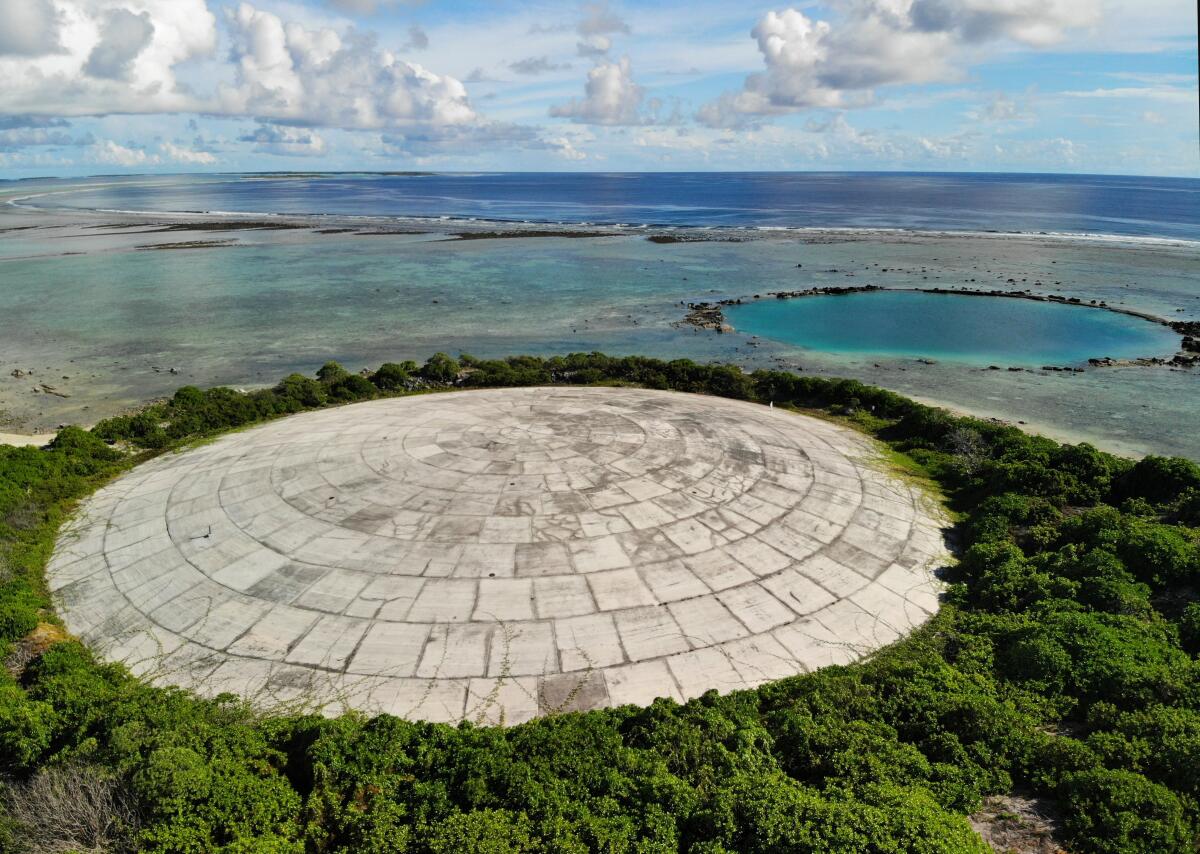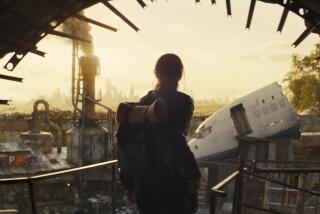Letters to the Editor: It was a bad idea to nuke the Marshall Islands. Has the U.S. learned a lesson?

- Share via
To the editor: I would like to commend the Los Angeles Times for its special report about the damage caused by decades of nuclear testing in the tropical Pacific Ocean atolls that make up the Marshall Islands. I would have been none the wiser had this not been covered. It is precisely this type of investigative reporting that renews my faith in journalism.
Today, as devastating as it is to know that the people of the Marshall Islands have a toxic waste dump as a home, we must remember that 70 years ago, our mindset was different as we raced toward a sixth mass extinction, this one totally man-made.
That said, I sincerely hope the U.S. government takes a long, hard look at its 21st century responsibilities to make up for the ravages of the Atomic Age, and to restore the faith of the people it hoodwinked for the so-called greater good.
Andrew Lukac, Kapolei, Hawaii
..
To the editor: Your special feature mentioned the effects of the first hydrogen bomb test on the land, the ocean and the Marshallese people. However, it made no mention of the sailors and naval officers who were involved in that project at Eniwetok in the Marshall Islands in 1952.
Many have died of cancers and rare forms of leukemia attributed to radiation. My husband was one of them. He died of acute myelogenous leukemia.
He was on one of the destroyers that were about 30 miles from the island where the detonation took place. When the shock wave hit the ship, those on board were allowed to turn and view the explosion. By then, the cloud embanked the horizon and was covering the sky overhead.
Unfortunately, at the time, it appears that too little was known about the lasting effects of radiation.
Monika Broome, Fullerton
..
To the editor: I spent a year in the early 1980s living in the Marshall Islands.
Employed by a government contractor, I underwent an orientation in which I was given a booklet published by United States Department of Energy that outlined risk factors related to radiation exposure. Gathering coconuts was discouraged.
Shame on the United States for leaving this mess not just for the Marshallese but for all mankind.
Vernette Cooper, Signal Hill
..
To the editor: Your special section was a very sobering educational supplement on our nuclear testing in the Marshall Islands, the cleanup and possible future problems from climate change. What terrific research and reporting.
L.A. Times readers might be interested in these lines about the bomb “Ivy Mike,” which was detonated in 1952, from the book “True Genius” by Joel Shurkin:
“Mike was to be tested on Elugelab, an island north of Eniwetok. At 7:15 a.m., November 1, a radio signal was sent from a ship and 92 detonators on Mike fired simultaneously. Within microseconds it produced a fireball hotter than the interior of the sun that grew to three miles across. Orange, purple, and red the fireball rose more than 100,000 feet, hit the stratosphere, and spread out in mushroom formation, a huge, virulent canopy that stretched more than 100 miles. Elugelab was vaporized. The yield was 10.4 megatons, 1,000 times more powerful than the bomb that destroyed Hiroshima. The world was a different place.”
Ben Nethercot, Topanga
More to Read
A cure for the common opinion
Get thought-provoking perspectives with our weekly newsletter.
You may occasionally receive promotional content from the Los Angeles Times.









